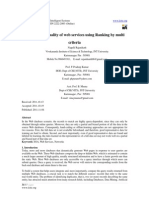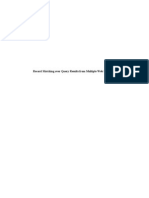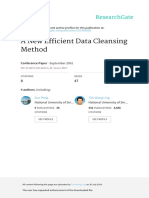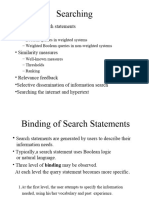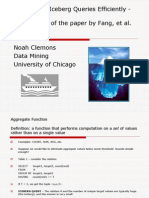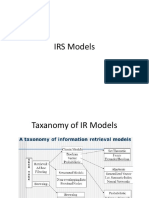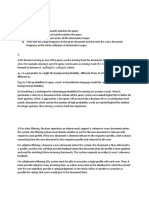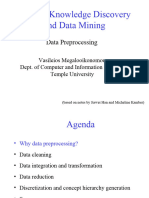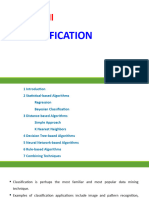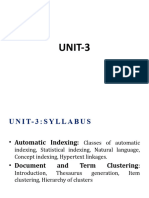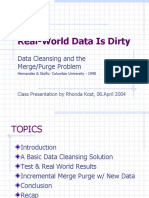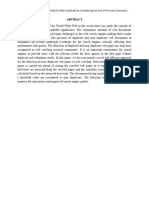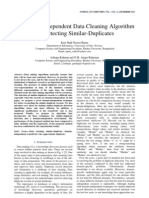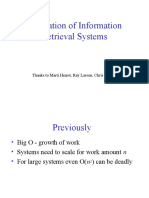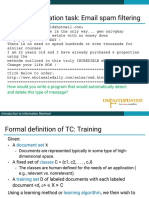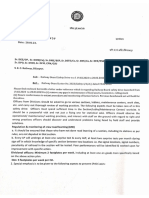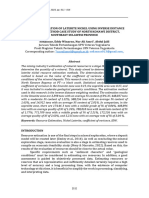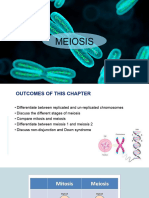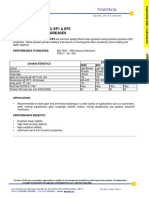0% found this document useful (0 votes)
39 views12 pagesDuplicate Removal in Web Databases
This document proposes a method for removing duplicate records from multiple web databases using unlabeled learning and two classifiers that collaborate iteratively. The first classifier, called WCSS, calculates the similarity between records by comparing the weighted components and sums the similarities. The second classifier, Naive Bayes, is used to set a threshold for classification by comparing the ratio of probabilities for a record belonging to each class. The method was able to remove 75% of duplicate records from multiple web databases without requiring predefined rules or representative training data. Future work could aim to remove more than 75% of duplicates using other classifiers.
Uploaded by
aravinthcseCopyright
© Attribution Non-Commercial (BY-NC)
We take content rights seriously. If you suspect this is your content, claim it here.
Available Formats
Download as PPTX, PDF, TXT or read online on Scribd
0% found this document useful (0 votes)
39 views12 pagesDuplicate Removal in Web Databases
This document proposes a method for removing duplicate records from multiple web databases using unlabeled learning and two classifiers that collaborate iteratively. The first classifier, called WCSS, calculates the similarity between records by comparing the weighted components and sums the similarities. The second classifier, Naive Bayes, is used to set a threshold for classification by comparing the ratio of probabilities for a record belonging to each class. The method was able to remove 75% of duplicate records from multiple web databases without requiring predefined rules or representative training data. Future work could aim to remove more than 75% of duplicates using other classifiers.
Uploaded by
aravinthcseCopyright
© Attribution Non-Commercial (BY-NC)
We take content rights seriously. If you suspect this is your content, claim it here.
Available Formats
Download as PPTX, PDF, TXT or read online on Scribd
/ 12


